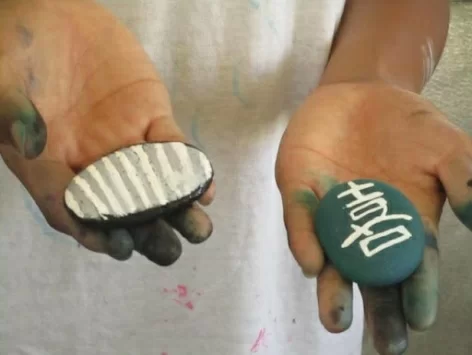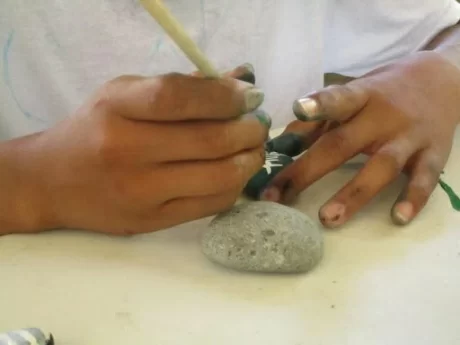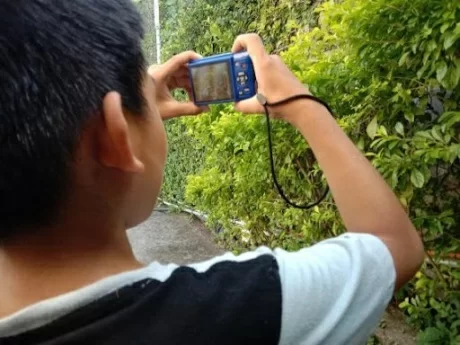Posts By: Eric Abellana›Show All
Zeitgeist
“Your story may not have such a happy beginning, but that doesn’t make you who you are. It is the rest of your story. Who you choose to be.” --Soothsayer, Kung Fu Panda 2
“I didn’t see my mother nor my father. I haven’t met them. No picture. No memories. I’ve been raised by strangers.”
“If only my father was gentle to my mother. They could have stayed together and we might not be here.”
“My mother left me. She even never said goodbye. I don’t know the reason.”
“The couple who fostered me and gave me home have shattered the very idea of home.”
Beginning. Once upon a time.
These are the stories of the beginnings of some of the older residents in CSC. Flipping the pages of their lives into the past would take a lot of courage and relationship. Some chose to seal those pages; while others are open about their once-upon-a-times. In counseling, children often share about their days, their dreams, as well as their past. For a child to paint these stories allows us to help them craft their life story.
“Life story is essential in developing one’s personality, values, and meaning. It’s the integration of reconstructed past and imagined future to provide life with some degree of unity and purpose.” --McAdams & McLean, Narrative Identity, 2013
Although this process may resurface the phantoms of the past, it helps the older resident embrace his/her whole story. By embracing his/her painful once-upon-a-time, it paves the way to acceptance and forgiveness. For some older residents, it was a privilege to hear them express how they acknowledge that no matter how painful their past was, it happened, it happened, it happened. It happened and they saw the collateral beauty of that pain. They are here. They are here with people who love them; who cares for them; who believes in them; who brought back the cape of their childhood; who gives them wings to soar the new horizon.
As our older residents navigate the new waters of independent living, they are more open to building bridges to their past. For some, they have birth families that they can return to; while others are starting to put together the pieces of their beginning. Their new journey is a navigation of mirth and melancholy; hopes and despair; and success and failures. They are now in the process of writing the new chapter, or perhaps, the sequel of their stories. Seeing the collateral beauty, they now have the power to restructure their future and have the power to direct their own narrative— narrative of an iridescent hope.
Beauty and Madness
They said that time heals. True. However, time alone could not do all the stitches. Most of the children here in CSC have a myriad of wounds to heal from their past. A wound on their knees would only take a week to heal but a wound made when no one helped them to get up would take years, a hundred of CSC outings, and relationships. Some have spent most of their childhood here. And that's a lot of time yet most of them are still haunted by the ghosts of their past— the phantom of neglect, rejection, abandonment, and the monstrous impact of separation from their significant others. Time is not enough.
I've been working with these children for three years and I've witnessed how these ghosts have influenced their behaviors and perspective of their own selves and their lives. Despite these, I've also observed how the love and care provided by the houseparents, aunties (caregivers), and other staff in CSC have greatly lessened the grip of these ghosts in their lives. Because of this, children have retaken the cape of their childhood. Trust has sprouted again and has blossomed into friendship and family. It is truly magical to witness how a child trusts an adult again. A positive and healthy relationship is, for me, the greatest healing the child could have. In counseling, we highly value relationships as this always precedes any counseling techniques. Although it has always been a challenge gaining the children's trust, art has paved the way for us, counselors, to see and hear their stories. It has been a great tool for us to deal with resistant children in counseling. Art allows the child to express himself/herself in ways he/she is most comfortable to. It allows the child to "reflect their inner worlds, depicting various feelings" (Malchiodi, 1998). Art helps the children share their stories to us in a non-threatening way. It allows the child to have full control of their creation. Painting, drawing, music, and photography are the usual art modalities chosen by the boys.




The pictures above are just some of the ways to utilize art in helping children become aware of the ghosts of their past. Some, especially the older ones, have slowly faced their past in a more positive and hopeful way. I am hoping that the time they spend here in CSC would help them see the collateral beauty in pain.
They said that time heals. True. It is true but time is not enough to do all the stitches. Instead, time allows our crushed spirit to get up; to acknowledge pain and becomes familiar to it; to understand that our pain has an ending; to have relationships blossom; to ignite a new dream; to see that all along God has been stirring the wheel. And time helps the children to better understand that "all things work together for good to those who love God, to those who are called according to His purpose." (Romans 8:28, NKJV).






